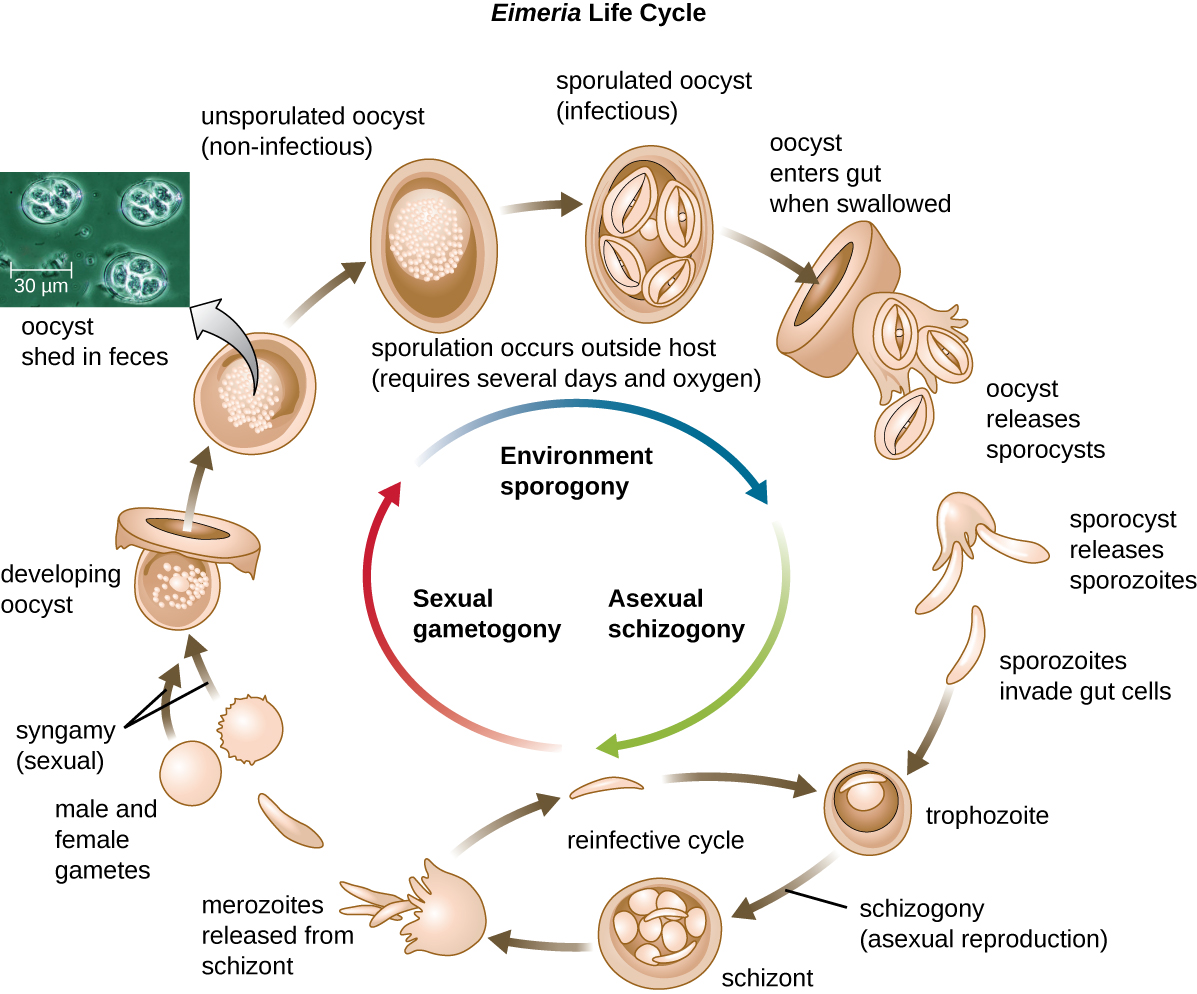| << Chapter < Page | Chapter >> Page > |
Protozoans inhabit a wide variety of habitats, both aquatic and terrestrial. Many are free-living, while others are parasitic, carrying out a life cycle within a host or hosts and potentially causing illness. There are also beneficial symbionts that provide metabolic services to their hosts. During the feeding and growth part of their life cycle, they are called trophozoite s ; these feed on small particulate food sources such as bacteria. While some types of protozoa exist exclusively in the trophozoite form, others can develop from trophozoite to an encapsulated cyst stage when environmental conditions are too harsh for the trophozoite. A cyst is a cell with a protective wall, and the process by which a trophozoite becomes a cyst is called encystment . When conditions become more favorable, these cysts are triggered by environmental cues to become active again through excystment .
One protozoan genus capable of encystment is Eimeria , which includes some human and animal pathogens. [link] illustrates the life cycle of Eimeria .

Protozoans have a variety of reproductive mechanisms. Some protozoans reproduce asexually and others reproduce sexually; still others are capable of both sexual and asexual reproduction. In protozoans, asexual reproduction occurs by binary fission, budding, or schizogony. In schizogony , the nucleus of a cell divides multiple times before the cell divides into many smaller cells. The products of schizogony are called merozoites and they are stored in structures known as schizonts. Protozoans may also reproduce sexually, which increases genetic diversity and can lead to complex life cycles. Protozoans can produce haploid gametes that fuse through syngamy . However, they can also exchange genetic material by joining to exchange DNA in a process called conjugation . This is a different process than the conjugation that occurs in bacteria. The term protist conjugation refers to a true form of eukaryotic sexual reproduction between two cells of different mating types. It is found in ciliate s , a group of protozoans, and is described later in this subsection.
All protozoans have a plasma membrane, or plasmalemma , and some have bands of protein just inside the membrane that add rigidity, forming a structure called the pellicle . Some protists, including protozoans, have distinct layers of cytoplasm under the membrane. In these protists, the outer gel layer (with microfilaments of actin) is called the ectoplasm . Inside this layer is a sol (fluid) region of cytoplasm called the endoplasm . These structures contribute to complex cell shapes in some protozoans, whereas others (such as amoebas) have more flexible shapes ( [link] ).
Different groups of protozoans have specialized feeding structures. They may have a specialized structure for taking in food through phagocytosis, called a cytostome , and a specialized structure for the exocytosis of wastes called a cytoproct . Oral grooves leading to cytostomes are lined with hair-like cilia to sweep in food particles. Protozoans are heterotrophic. Protozoans that are holozoic ingest whole food particles through phagocytosis. Forms that are saprozoic ingest small, soluble food molecules.

Notification Switch
Would you like to follow the 'Microbiology' conversation and receive update notifications?